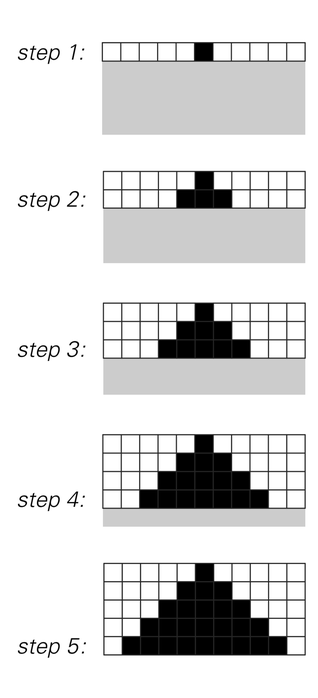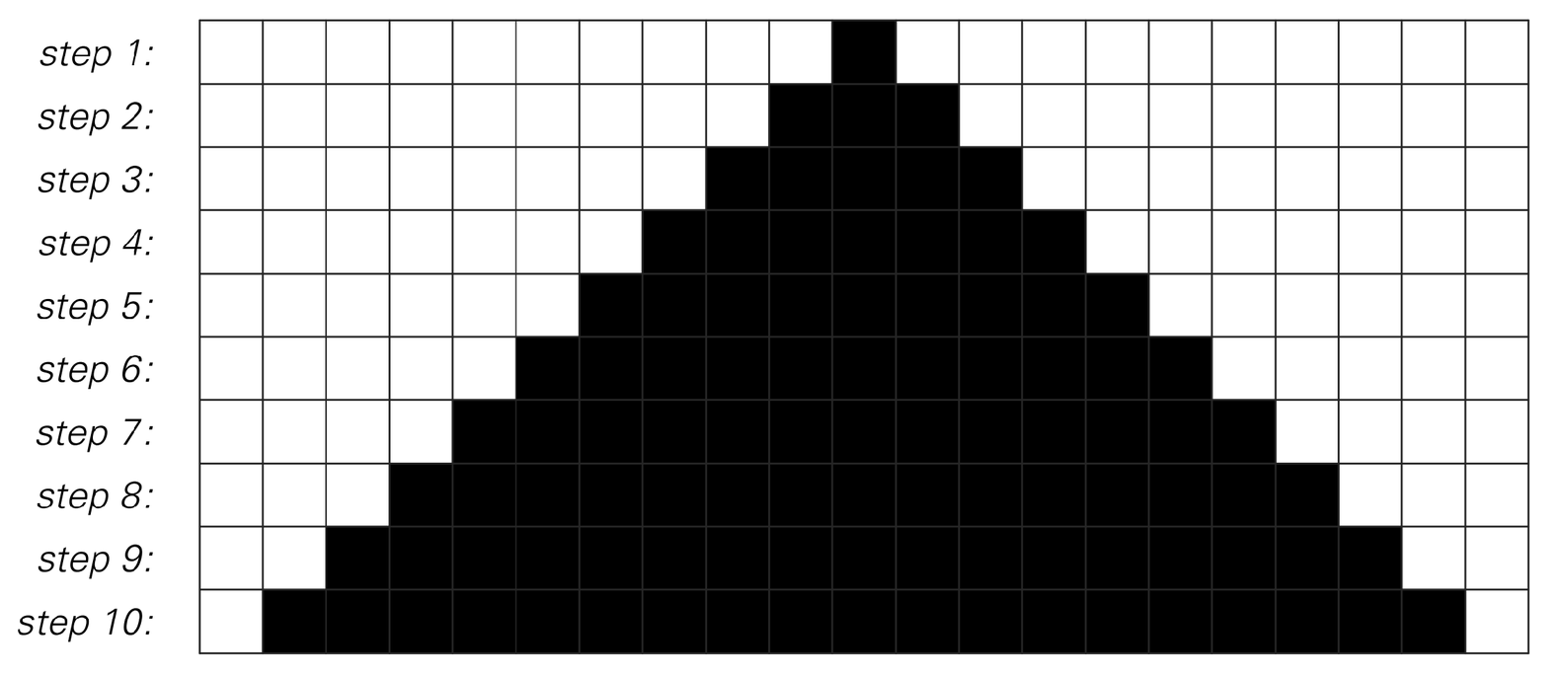An important feature of cellular automata is that their behavior can readily be presented in a visual way. And so the picture below shows what one cellular automaton does over the course of ten steps.
The cellular automaton consists of a line of cells, each colored either black or white. At every step there is then a definite rule that determines the color of a given cell from the color of that cell and its immediate left and right neighbors on the step before.
For the particular cellular automaton shown here the rule specifies—as in the picture below—that a cell should be black in all cases where it or either of its neighbors were black on the step before.
And the picture at the bottom of the page shows that starting with a single black cell in the center this rule then leads to a simple growing pattern uniformly filled with black. But modifying the rule just slightly one can immediately get a different pattern.
As a first example, the picture at the top of the facing page shows what happens with a rule that makes a cell white whenever both of its neighbors were white on the step before—even if the cell itself was black before. And rather than producing a pattern that is uniformly filled with black, this rule now instead gives a pattern that repeatedly alternates between black and white like a checkerboard.
 |  |
A visual representation of the behavior of a cellular automaton, with each row of cells corresponding to one step. At the first step the cell in the center is black and all other cells are white. Then on each successive step, a particular cell is made black whenever it or either of its neighbors were black on the step before. As the picture shows, this leads to a simple expanding pattern uniformly filled with black.

A representation of the rule for the cellular automaton shown above. The top row in each box gives one of the possible combinations of colors for a cell and its immediate neighbors. The bottom row then specifies what color the center cell should be on the next step in each of these cases. In the numbering scheme described in Chapter 3, this is cellular automaton rule 254.